Three great itinerary suggestions for spending 2 weeks in Greece. Includes the best tourist attractions in Greece, which Greek islands to visit, and more!
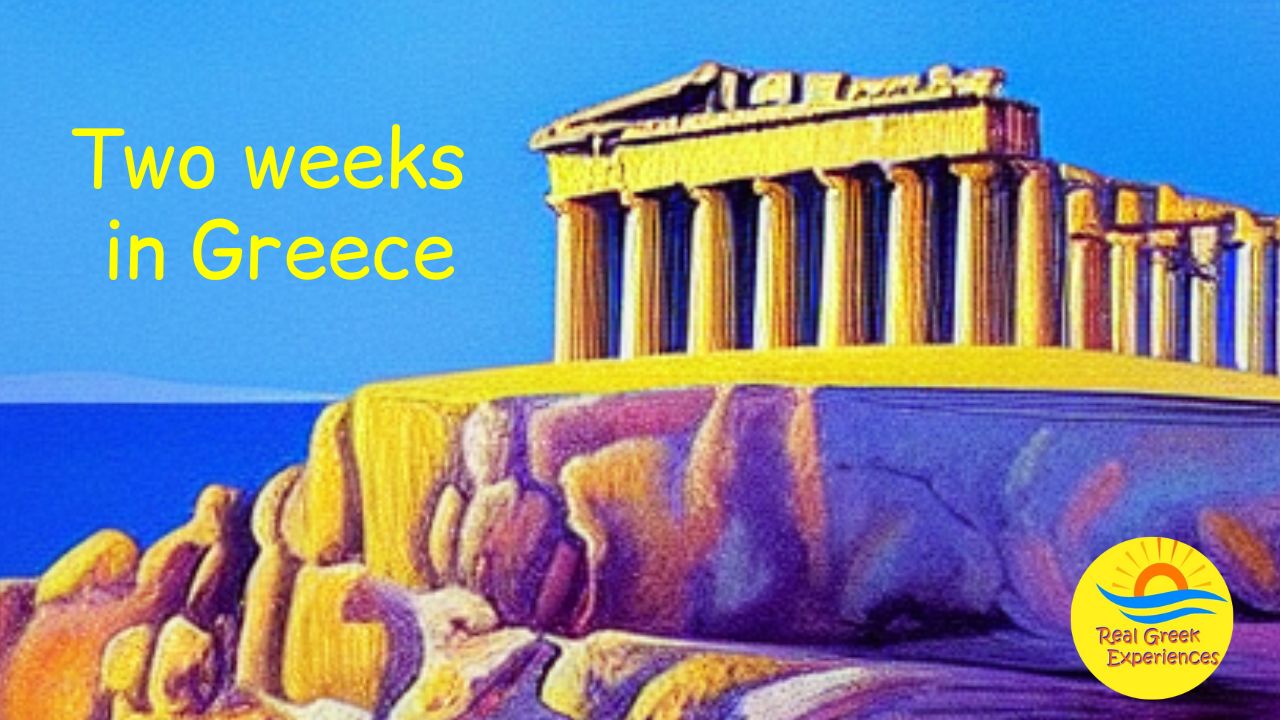
Three itinerary ideas for your 2-week trip to Greece
So, you’ve booked your flights to spend 2 weeks in Greece! You must be excited! But, like many people traveling to Greece, you may also be overwhelmed by the endless options of places to go – especially if you are visiting for the first time.
The choice can be tough! Greece has over a hundred inhabited islands, located in different regions of the country. There are also dozens of ancient sites and beautiful landscapes all through mainland Greece.

The good news? Two weeks is a great amount of time to see several of Greece’s highlights, or to explore less visited destinations. Here are three itinerary ideas for your Greek vacation, depending on your interests and preferences.
The Greek islands and more famous destinations in Greece
Most people visiting in summer will want to spend a few days on some of the Greek islands.
Santorini, Crete, Mykonos, Skiathos, Corfu, Zakynthos, Rhodes and Kos are just a few of our popular islands, where you can fly directly from several European airports.
Other islands, like Milos or Naxos, can only be accessed on a domestic flight from Athens, or on one of the numerous Greek ferries.
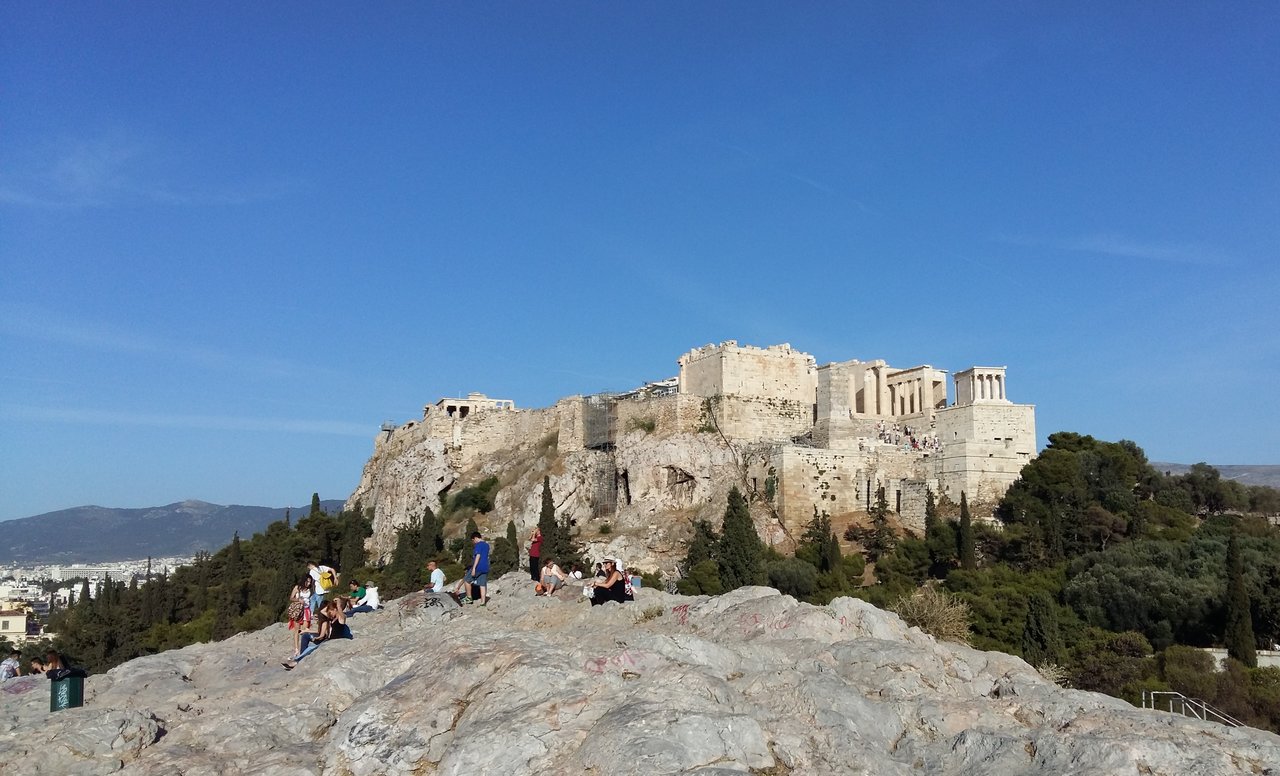
People who are after sightseeing and ancient sites will want to visit places like Athens, Ancient Delphi, Ancient Mycenae, the theatre in Ancient Epidaurus, Ancient Olympia and the Meteora Monasteries.
Repeat visitors to Greece will often want to discover off-the-beaten-track destinations. This might include island-hopping to some more remote islands, or hiring a car and driving around the mainland.
Three itineraries for Greece
Here are three example itineraries for people planning a Greek holiday. They all begin and end in Athens, so you can spend longer in our capital city if you want.
Or you can also build your own itinerary based on these suggestions – the options are endless!
Itinerary #1: Greece highlights
This packed itinerary allows you to experience Athens, Santorini, one more island, Ancient Delphi, the Meteora Monasteries, and Epidaurus, Mycenae and Nafplion in the Peloponnese.
It’s a great itinerary idea for first-time visitors to Greece, as you will see some of the most popular tourist attractions. Then you can start planning your next Greek vacation!

Itinerary #2: Athens and the Greek islands
This is a great choice for people who want to experience Athens and do some island hopping. This itinerary is very easy to organize on your own, using Ferryscanner, a great search engine where you can see ferry routes and book your tickets.
Your biggest dilemma here is… which islands to choose! Assuming you want to visit the bucket-list destination Santorini, you should look for islands that are directly connected on ferries, such as Milos, Mykonos, Naxos, Paros, Tinos or Crete.
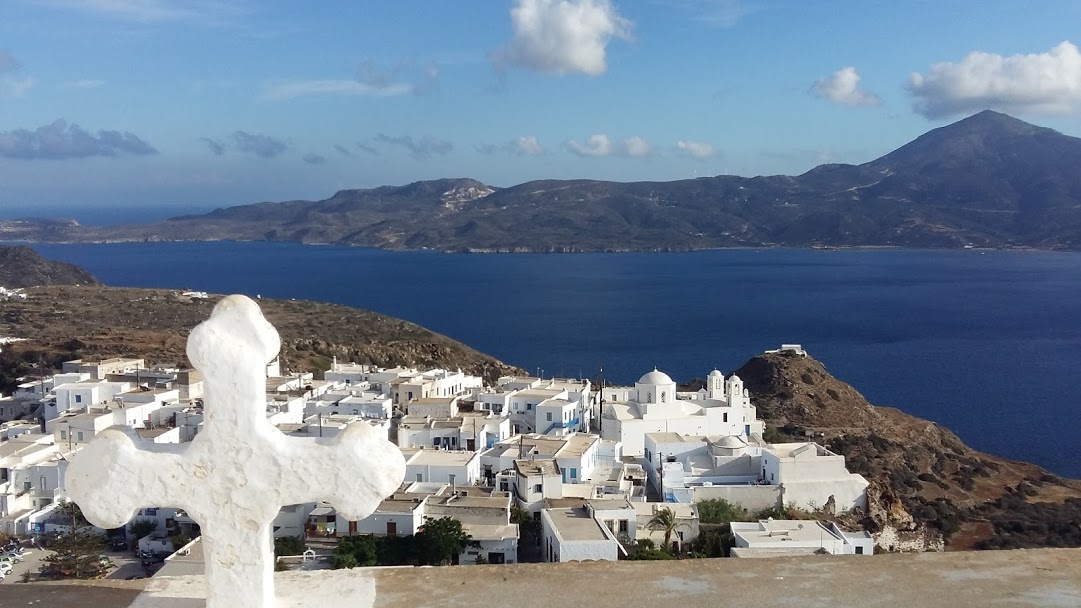
Itinerary #3: Athens and the Peloponnese
This itinerary will appeal to people who are happy to drive around and explore the beautiful region of Peloponnese. You will see quaint towns and villages, lovely landscapes, and some of the best archaeological sites in Greece.
If you prefer to avoid tours and ferries, and want the freedom of your own vehicle, this itinerary is ideal for you.
Let’s break down these itineraries!
1. Greece highlights: Day-to-day itinerary
First time visitors to Greece will love this itinerary. You will explore some of the most iconic destinations in our country, and also get to spend some time on the beach!
Here is what it looks like:
- Day 1 – Arrive to Athens, fly to Santorini
- Days 1-5 – Explore Santorini
- Day 5 – Ferry from Santorini to other island, e.g. Mykonos, Naxos or Milos
- Days 5-9 – Explore other island
- Day 9 – Ferry / flight to Athens, stay in Athens for a night
- Day 10-11 – Take a two-day tour to Delphi and Meteora
- Day 12 – Take a day trip to Mycenae, Epidaurus and Nafplio
- Days 13–14 – Explore Athens
Besides the iconic Santorini island, this trip allows enough time to see two famous historic landmarks in central Greece: Ancient Delphi, the most sacred area for Ancient Greeks, and the majestic Meteora Monasteries.
Apart from their religious significance, these two places are fascinating in terms of the landscapes and unique energy.
In addition, you can visit two of the most important archeological sites in the Peloponnese: Ancient Mycenae, and the theatre of Ancient Epidaurus.
Let’s have a closer look at all these destinations!
See Athens, the birthplace of western civilization
First-time visitors to Greece should definitely spend a couple of days in Athens. There is so much to do and see, and the city has a unique vibe!
If you are flying in and out of the Greek capital, I suggest that you explore Athens at the end of your trip. This way, you can spend your last nights in the city, which is convenient if you have to catch your return flight.
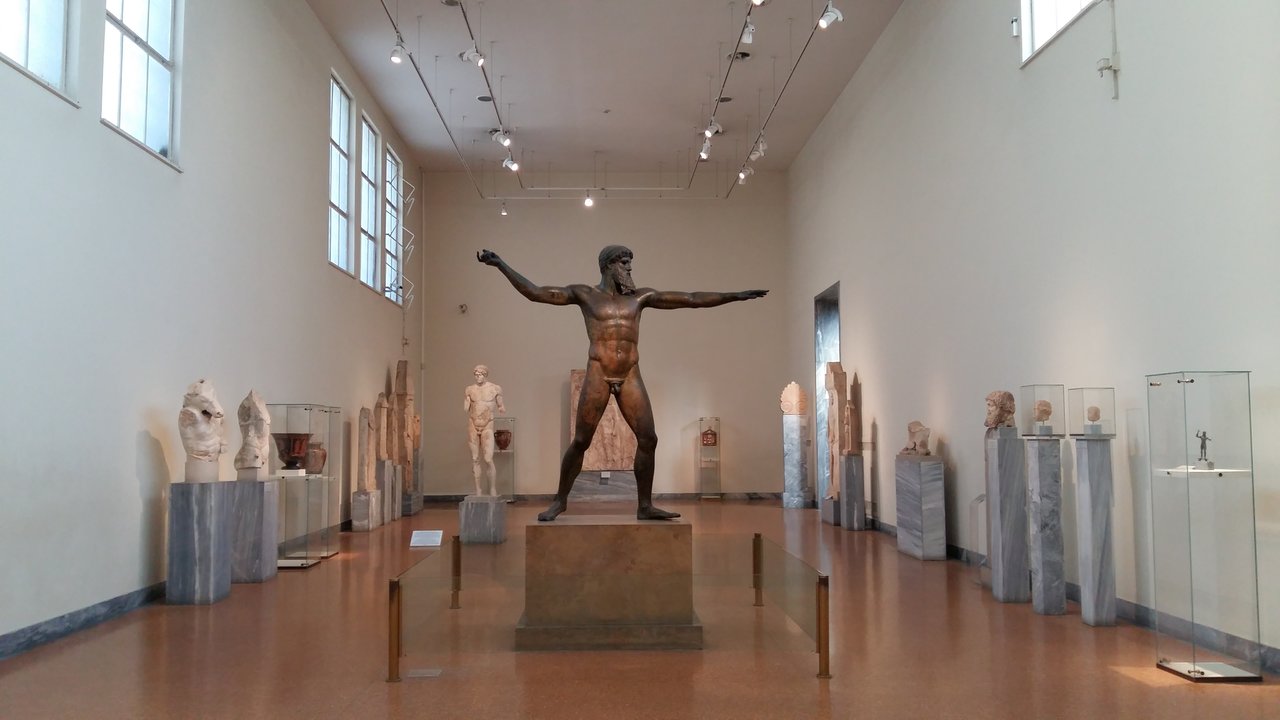
What is there to do in Athens Greece?
Our bustling capital is a paradise for archaeology buffs. There are many ancient sites and historical museums that you can visit.
The city centre is also full of bustling markets and souvenir shops, where you can buy everything you can think of. You can find all sorts of clothes, original jewelry, replicas of ancient Greek statues and plenty of tacky Greek souvenirs.
Athens is also a cool place to stroll around and explore our brilliant street art. Take some time to wander through quaint neighbourhoods and sit for a coffee, watching the world go by.
If all this sounds interesting, allow for more than a couple of days in Athens, as the Greek capital has tons to offer.
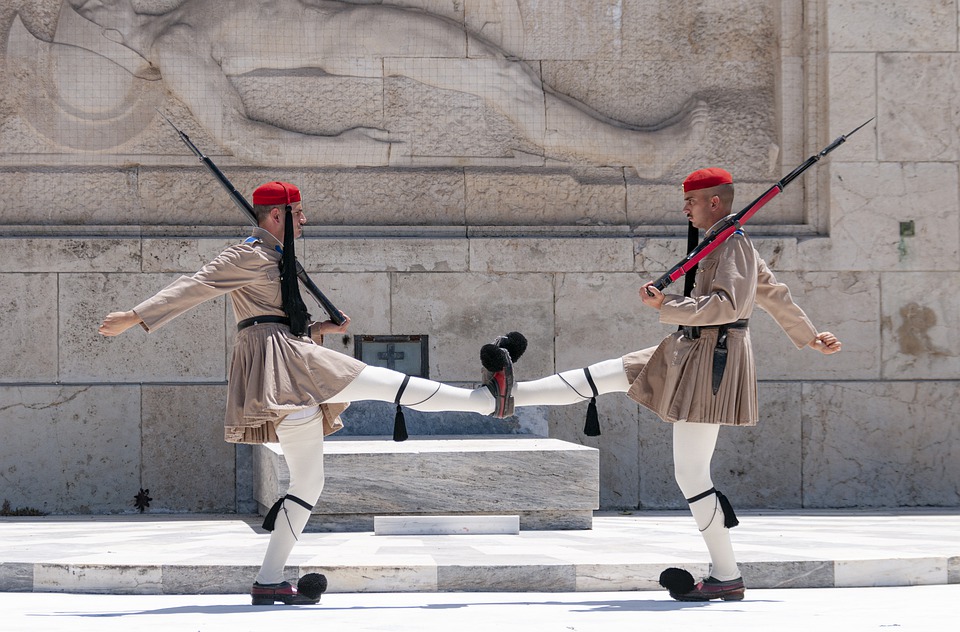
In fact, you can stay as long as you want and you will find that there will always be something new to see. But I am biased as I live here and can’t get enough of my city 🙂
What to do in Athens in 2 days – Day 1
If you have two days in Athens, start by visiting the Acropolis and the Acropolis Museum. No Athens itinerary is complete without them.
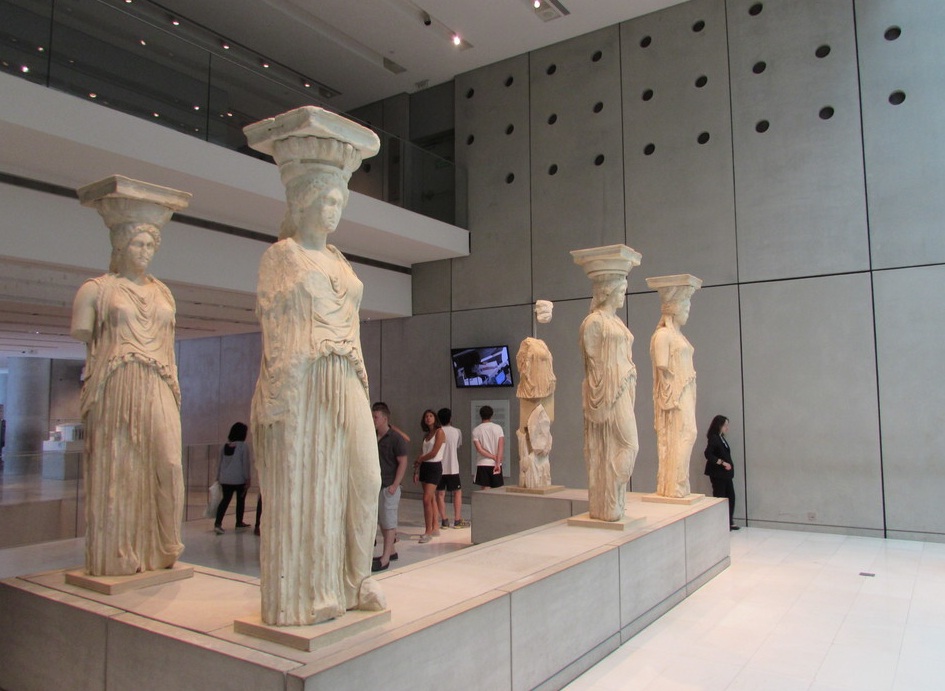
Nearby, you can visit the massive temple of Zeus, one of the most impressive ancient temples in the whole of Greece. To visit this incredible monument you will swing by another important monument, Hadrian’s Arch.
Note – if you happen to come from around Newcastle upon Tyne in the UK, yes, this is the same Roman Emperor Hadrian, after whom “Hadrian Park” and “Hadrian Road” have been named!
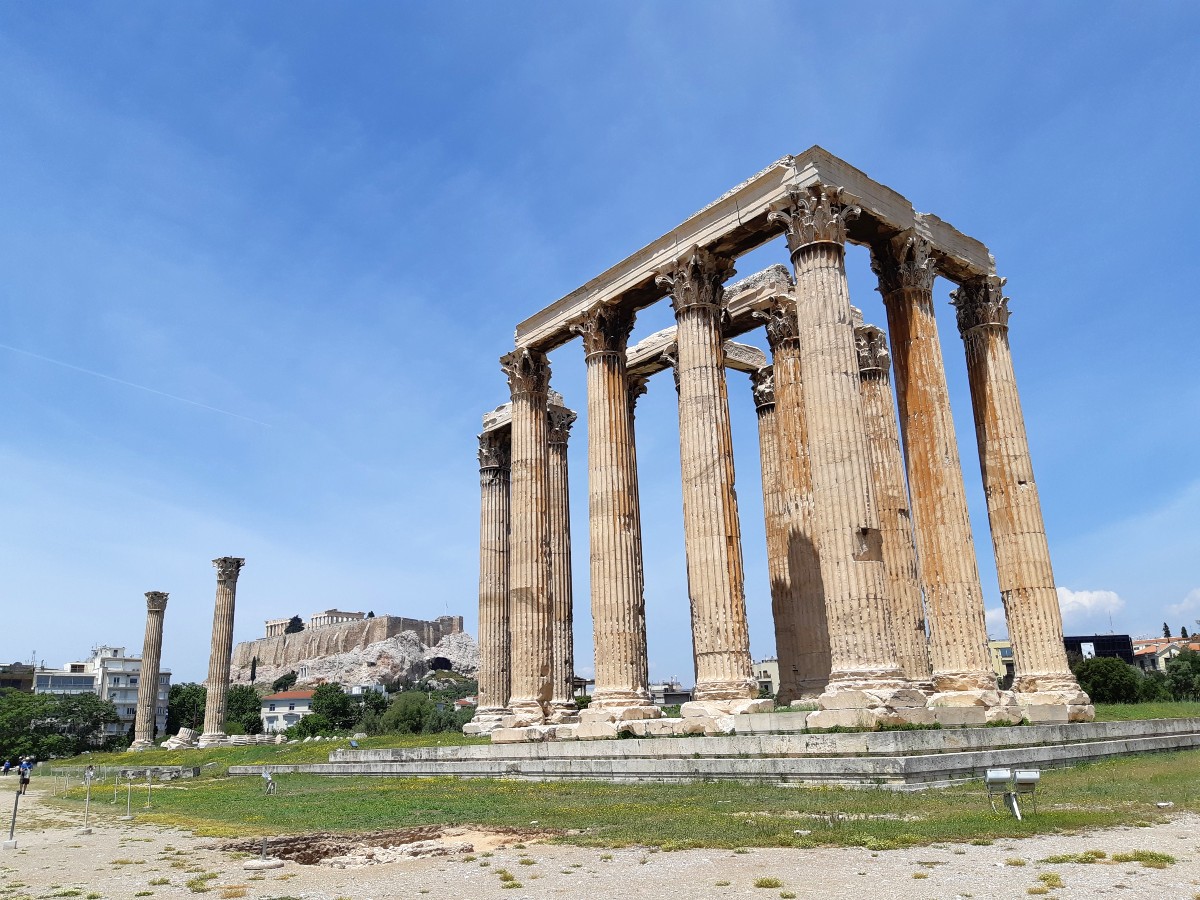
On your first day in Athens, you can also visit Monastiraki with the flea market. Right next door, you will find the charming, if touristy, area of Plaka.
If you have enough energy, climb up Anafiotika area, and you will discover a Cycladic island right in the middle of the city! There is some cool street art here as well.

What to do in Athens in 2 days – Day 2
On your second day in Athens, you can visit the amazing Ancient Agora. Later on, explore the quirky neighbourhood of Psiri, and visit the Central food market.
Afterwards, head to Syntagma square to watch the Changing of the Guards in front of the Parliament. You can stroll through the National Garden, and also visit the Panathenaic Stadium.
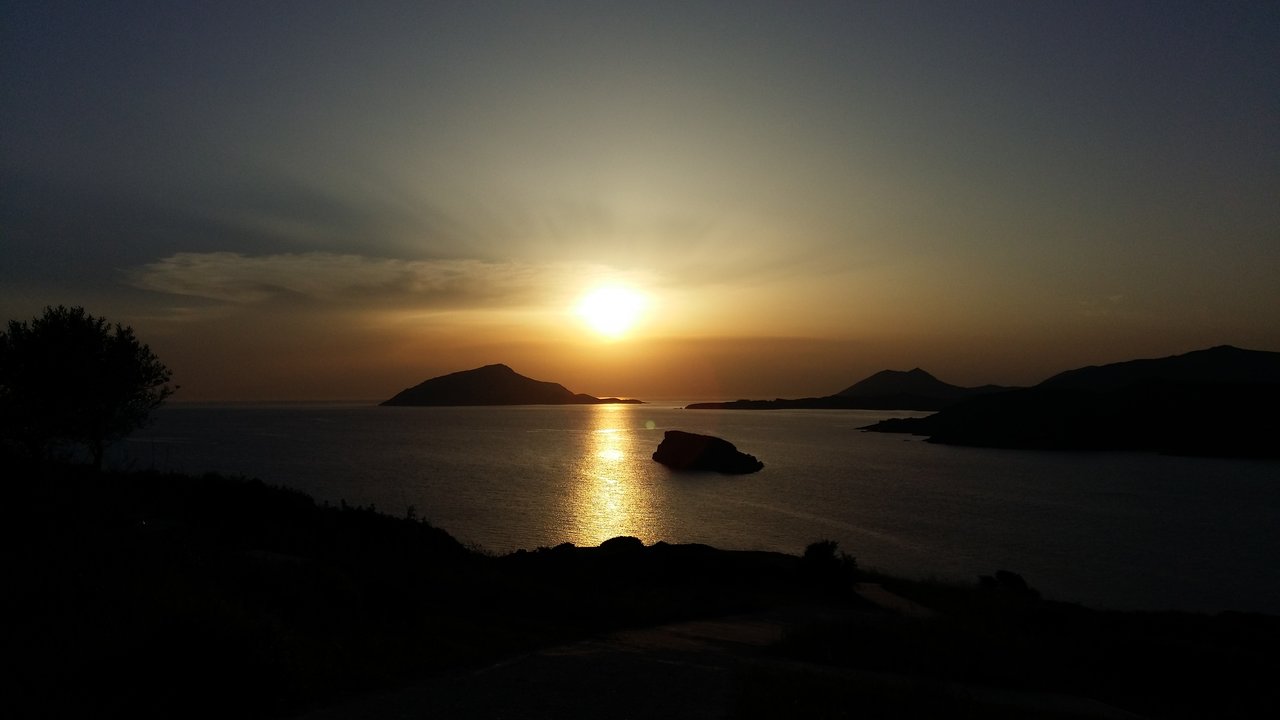
In the evening, you can hike up Lycabettus hill for some cool sunset views. Alternatively, take a half day trip to the impressive Temple of Poseidon at Sounion.
The location is just fantastic, and the coastal road leading to the temple passes by the beautiful Athens Riviera, where you can stop for a swim. The easiest way to get there is on an organized half-day trip to the Temple of Poseidon.
For more ideas on what to do in Athens, check out these detailed articles:
Visit Santorini, the most famous island in Greece
Most first-time visitors to Greece will want to go to one island: Santorini. This is one of the Cyclades islands in the Aegean Sea, to the east of mainland Greece. It was created by a volcanic eruption a few thousand years ago.
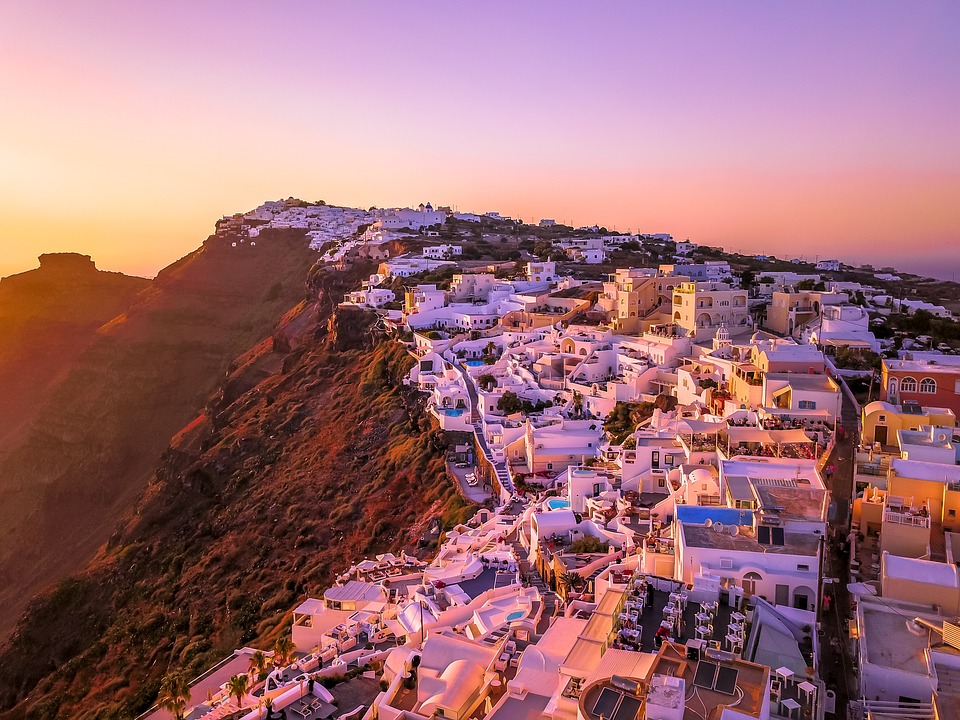
Some of the highlights of Santorini are the spectacular sunset views, the out-of-this-world volcano, the quaint villages with the iconic whitewashed houses, the hot springs and the ancient site of Akrotiri.
Best time to visit Santorini
Like with all popular destinations, Santorini gets busy. If you are visiting in high season, be prepared for large crowds, especially on days when many cruise ships arrive at once.
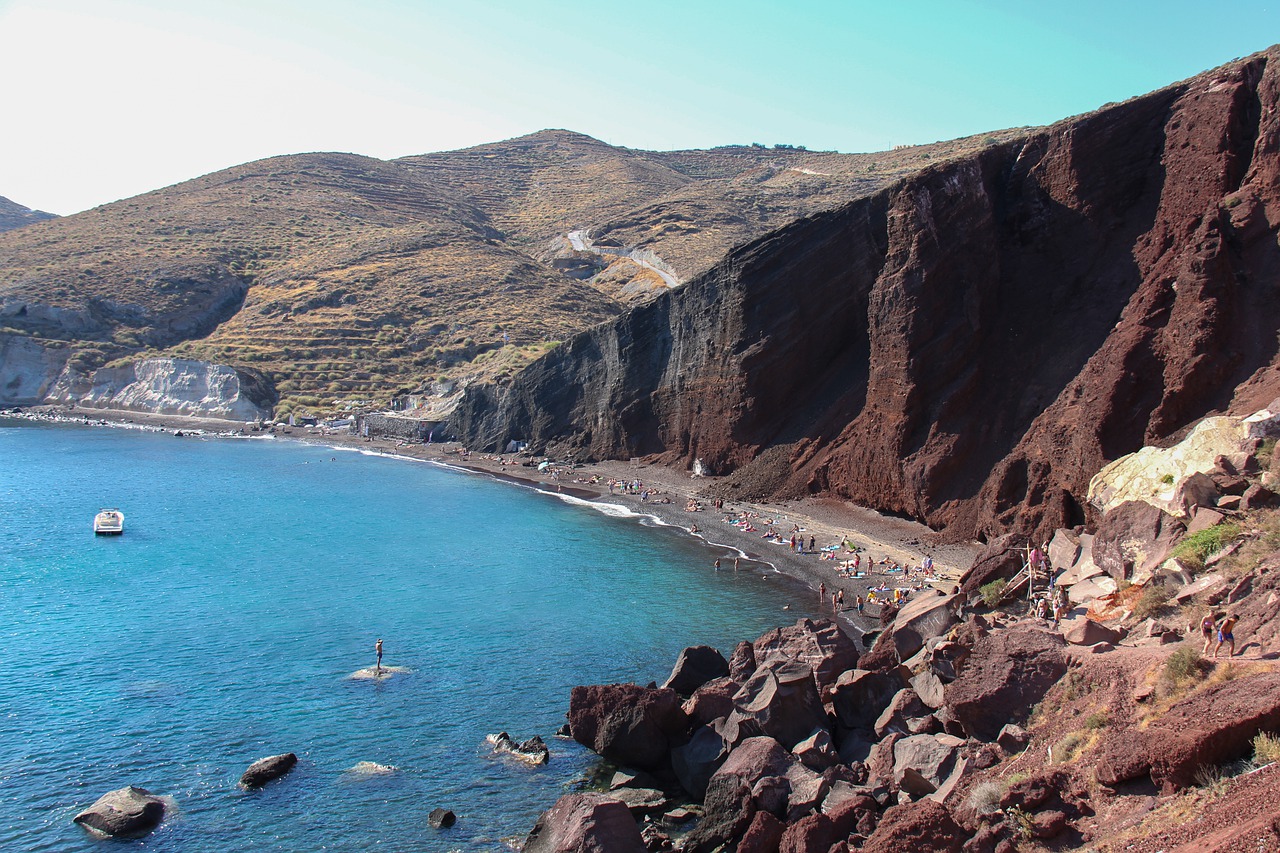
I personally enjoy visiting Santorini in winter a lot more than in summer. The hike from Fira, the main town, to Oia, the picturesque village on the northern tip, is one of my most enjoyable hikes ever – I’ve done it twice now, and will definitely do it again!
However, if you can only visit Greece in summer, you should definitely include Santorini in your vacation.
How long to spend in Santorini
I would suggest spending three nights in Santorini. This way you will comfortably see all the highlights, explore the villages and the volcano, maybe take a sunset cruise or wine tasting tour, and also have some time to spend on the beach.
That said, Santorini’s beaches may be picturesque, but they are not very special to swim on. If you are after a beach holiday, consider including another island as well, like Milos or Naxos.
Where to stay in Santorini
In terms of places to stay, both Oia and Fira have a range of rooms to let. This includes boutique hotels and other expensive accommodation options with a spectacular view to the caldera.

Budget-minded travelers could look into more affordable areas, like the black beach of Perissa / Kamari. Despite first impressions, Santorini can actually be very fairly priced.
Here is my guide on things to do in Santorini in 4 days, and my article on things to avoid in Santorini.
From Santorini, you can easily get a ferry to another island, and spend a few days there. I use Ferryscanner to check ferry routes and book my tickets. Scroll down to find out more about a few islands that are easily accessible from Santorini.
Experience Ancient Delphi and Meteora on a 2-day tour
Two of the most popular UNESCO sites in Greece are the site of Ancient Delphi, the most sacred area for Ancient Greeks, and the majestic Meteora Monasteries.
If you are happy to hire a car and drive, you can easily visit both of them on your own. However, many people prefer to take an organized two-day tour to Delphi and Meteora.
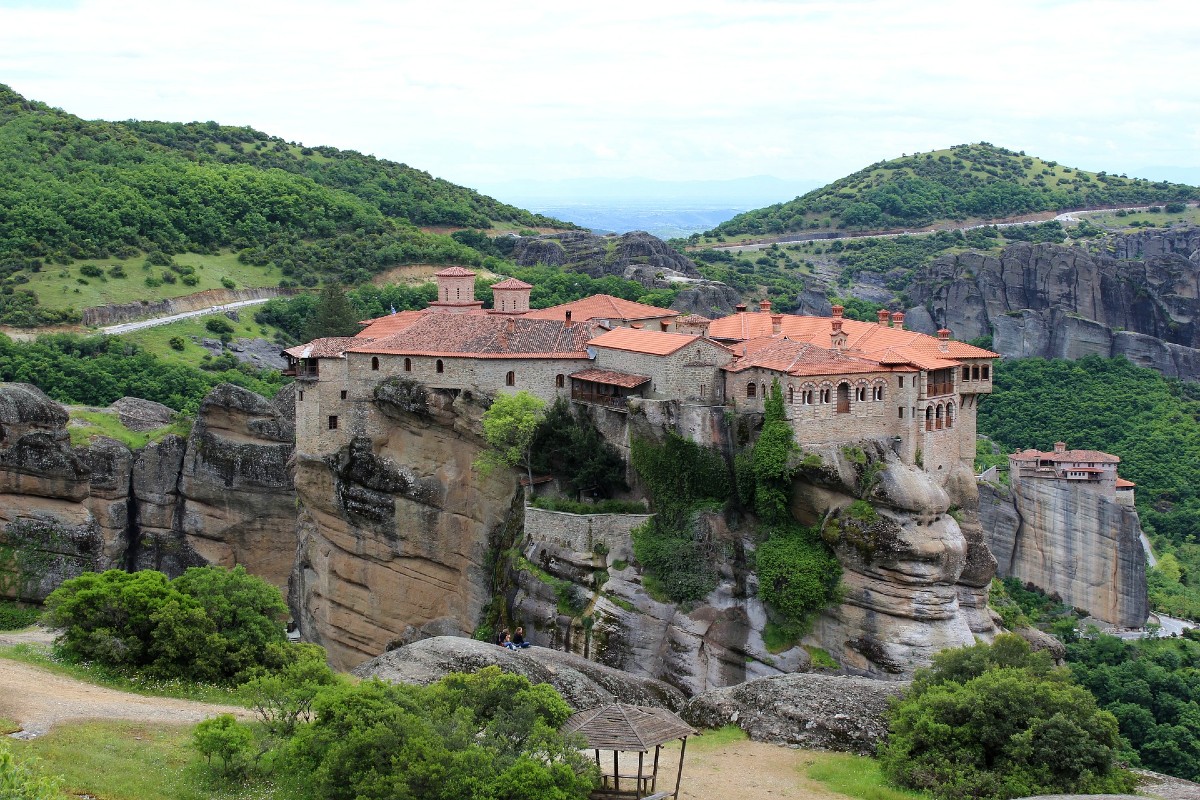
The ancient site of Delphi was dedicated to Apollo, the God of Light, Music and Arts. It was home to the Oracle Pythia, a high priestess with special powers, whose mission was to relay the messages of the Olympian Gods to humans.
The Meteora Monasteries are six functioning Christian Orthodox monasteries, built on top of some massive rock formations. I recently spent a few days in the area, and couldn’t get enough of the amazing views!
Apart from their religious significance, these two places are fascinating in terms of the landscapes and unique energy.
Here is some more information on these fascinating areas of Greece:
Take a day trip to see the highlights of the Peloponnese
The Peloponnese is a large region in Greece, south of Athens. It is full of ancient sites, beautiful mountainous landscapes, traditional villages and great beaches.
Most first-time visitors to Greece take a day trip to see some of the highlights of the Peloponnese. It’s a packed day, where you will visit the ancient sites of Mycenae and Epidaurus, and spend some time in Nafplio town, Greece’s first capital.
Ancient Mycenae is the area where the Mycenaean civilization first appeared during the 2nd millennium BC. The site is large, and there is a fantastic museum where you can learn more about this early Greek civilization.

Ancient Epidaurus is one of my favourite archeological sites in Greece. It is famous for its unique theater with the excellent acoustics, but not everyone knows that it was an important healing center!
Here is some more information on these unique ancient sites:
2. Athens and the Greek islands: Day-to-day itinerary
If you are interested in beach time, quaint architecture and sailing trips, this itinerary is perfect for you. You can combine the highlights of Athens with some time on a few of the Greek islands.
Assuming you want to go to Santorini, it’s best to combine it with other Cyclades islands, or Crete, that are easily accessible by ferry.
In order to compare and book ferry tickets, you can use search engines like Ferryscanner. These days, most ferry companies offer the option of an e-ticket.

If you are island hopping in Greece, I suggest spending anywhere from three to five days on each island. For bigger islands, like Naxos or Crete, you would need more time.
A two-week itinerary around the Greek islands could look like this:
- Day 1 – Arrive in Athens, fly to Santorini
- Day 4 – Ferry from Santorini to Milos
- Day 8 – Ferry from Milos to Naxos
- Day 12 – Ferry / flight from Naxos to Athens
- Days 12 – 14 – Athens
If you wanted to include Crete in your Greece itinerary, you could try something like this:
- Day 1 – Arrive in Athens, fly / ferry to Milos / Naxos / Paros
- Day 4 – Ferry from Milos / Naxos / Paros to Santorini
- Day 8 – Ferry from Santorini to Heraklion, Crete
- Day 12 – Ferry / flight from Heraklion or Chania in Crete to Athens
- Days 12 – 14 – Athens
Or, even better, something like this:
- Day 1 – Arrive in Athens, fly to Santorini
- Day 5 – Ferry from Santorini to Heraklion, Crete
- Day 12 – Ferry / flight from Heraklion or Chania in Crete to Athens
- Days 12 – 14 – Athens
Of course, there is always the option to take a cruise or sailing tour around the Greek islands. There are literally hundreds of options and itineraries, usually focusing on the Cyclades, the Ionian islands, or the Saronic islands.
Which Greek island is the best?
There is no right or wrong answer to the question “which Greek islands should I visit”, as they are all lovely in their own ways. It really comes down to what you want to do.
Each of the Cyclades has its own unique character, and it can be really hard to choose where to go. Do some research before your trip, and feel free to post down below for recommendations as I’ve been to all of them 🙂
Here is some information on the most popular Cyclades islands.
Mykonos – Famous for its nightlife
If it is crazy nightlife that you are after, you should consider Mykonos, the first Greek island ever to be visited by the international jet set. Thousands of people love it and visit every summer.
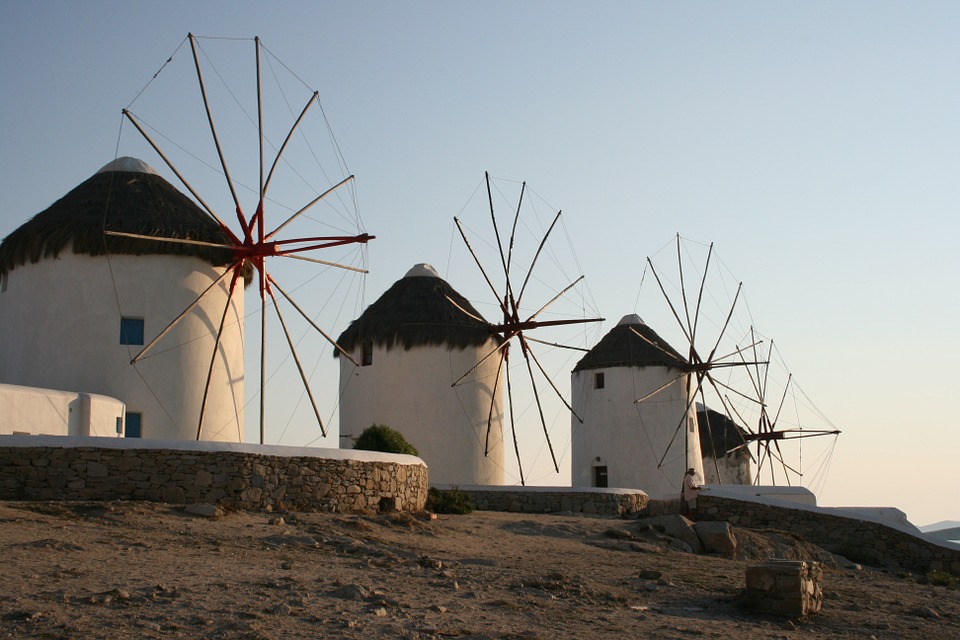
Apart from the nightlife, the island of the winds has a pretty impressive capital, Mykonos town. Despite the massive development in tourist infrastructure, the Cycladic architecture is still prominent.
I was lucky to visit Mykonos without the crowds in summer 2020, and totally appreciated what the island was originally known for – its seriously amazing beaches!
Fill them up with expensive loungers and umbrellas though, and it’s not quite my scene. And it won’t be your scene either if you are after authenticity, relaxation and the Greek way of life.
Should I include Mykonos in my two-week Greek holiday?
Again, there is no right or wrong answer to this question. If you are looking for “the authentic Greece”, it’s probably best to skip Mykonos and visit another island instead.
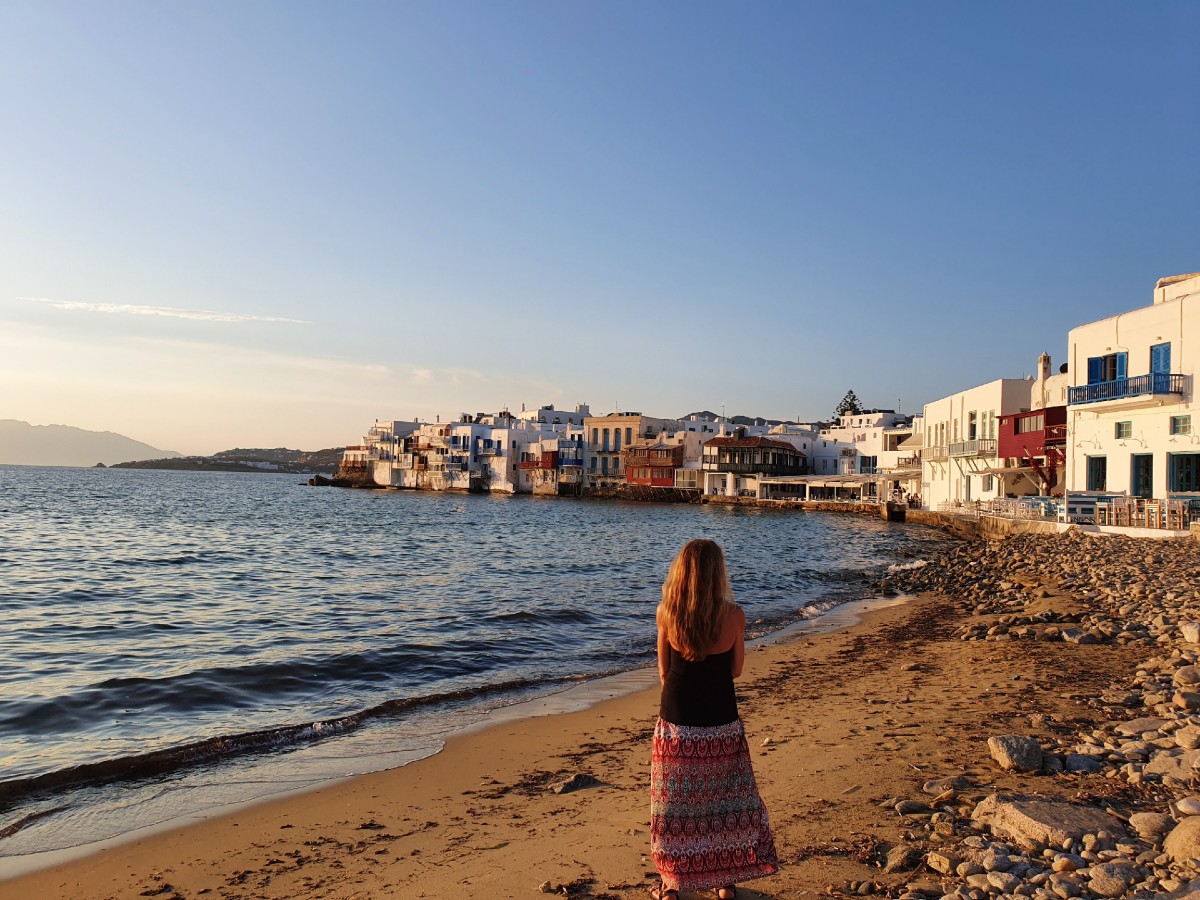
In addition, be aware that Mykonos is one of the most expensive destinations in Greece. Also, it’s one of the places where people go to see and be seen, so it gets super busy.
If you decide to go, don’t miss the fabulous archaeological site of Ancient Delos, which is a short boat trip from Mykonos.
Here is a detailed itinerary for Athens, Mykonos and Santorini. I’ve included a lot of information on travel logistics, flights, ferries, accommodation etc.
Naxos – Endless possibilities and fantastic food
Naxos is the largest of the Cycladic islands. While it’s a popular destination, it has kept its authenticity overall.
In my opinion, Naxos has some of the best beaches in Greece. You will definitely love the sandy beaches around Agios Prokopios, Agia Anna and Plaka, where you can swim all day long.
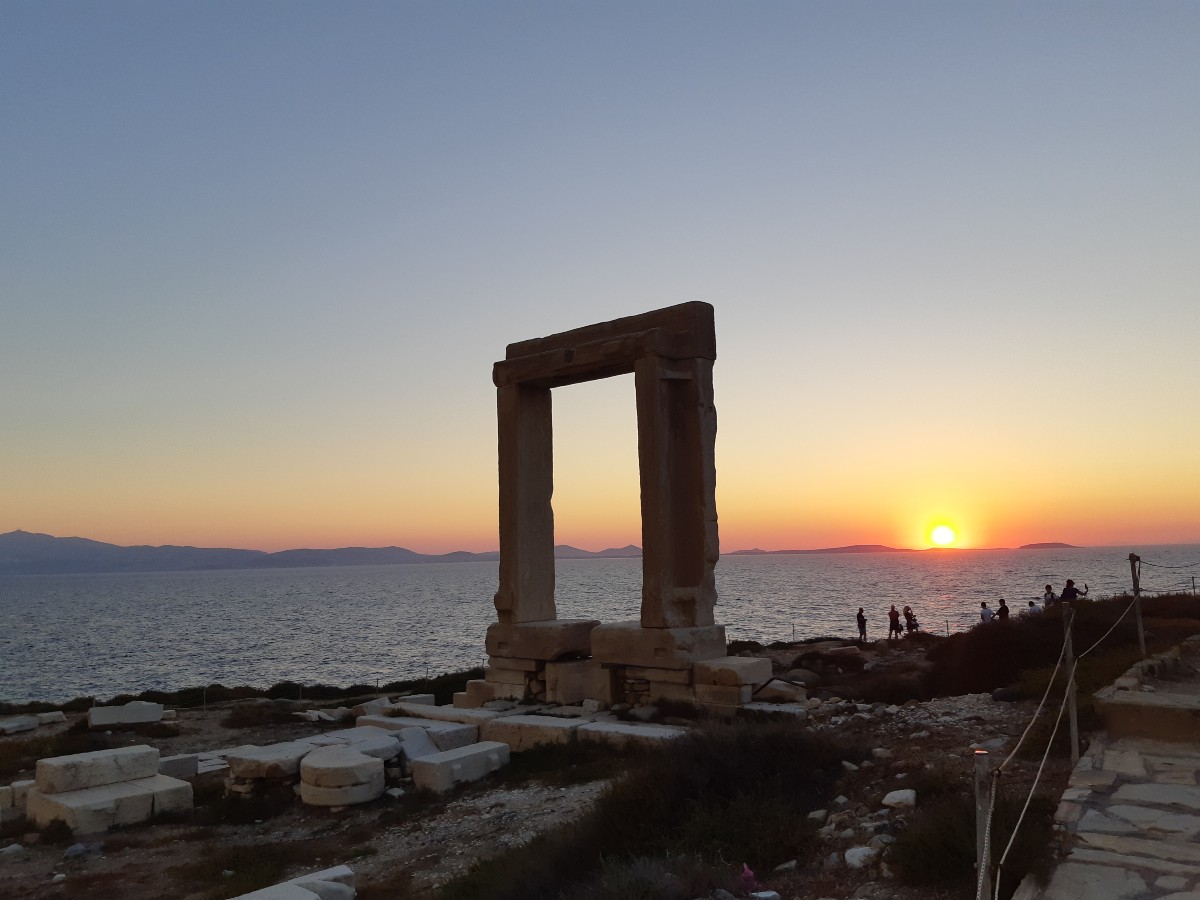
Naxos main town is one of my favourite capital towns in the Cyclades. The ruins of the Venetian castle and white-washed alleys will probably steal your heart.
Finally, the traditional mountain villages like Filoti, Apeiranthos and Halki are all worth visiting. You will see a totally different side of the island, and experience the local life.
Here’s a guide with things to do in Naxos island.
Paros – A good fit for everyone
Paros is another popular Cycladic island. It is one of the most diverse islands, as it combines many different elements that would appeal to most types of travelers.

The two main towns, Parikia and Naoussa, offer plenty of options for food and nightlife. Villages like Lefkes, Prodromos and Marpissa will impress you with the quaint architecture.
In terms of beaches, Paros has a good variety, ranging from long, sandy beaches to smaller, quiet coves. Families will appreciate the shallow waters, while active travelers will love trying water sports like windsurfing or kitesurfing.
All in all, Paros is a good fit for everyone, and is a great destination to include in an island-hopping trip. Here’s a guide with the best things to do in Paros.
Milos – Unique landscapes and diverse beaches
Milos is one of the most upcoming islands in Greece. It is famous for its strange, wild landscapes and diverse, iconic beaches like Sarakiniko and Kleftiko.
Milos was the result of a volcanic eruption over a million years ago. This is the reason behind its weird landscapes, and its unique mining culture, which has shaped the life on the island over the centuries.
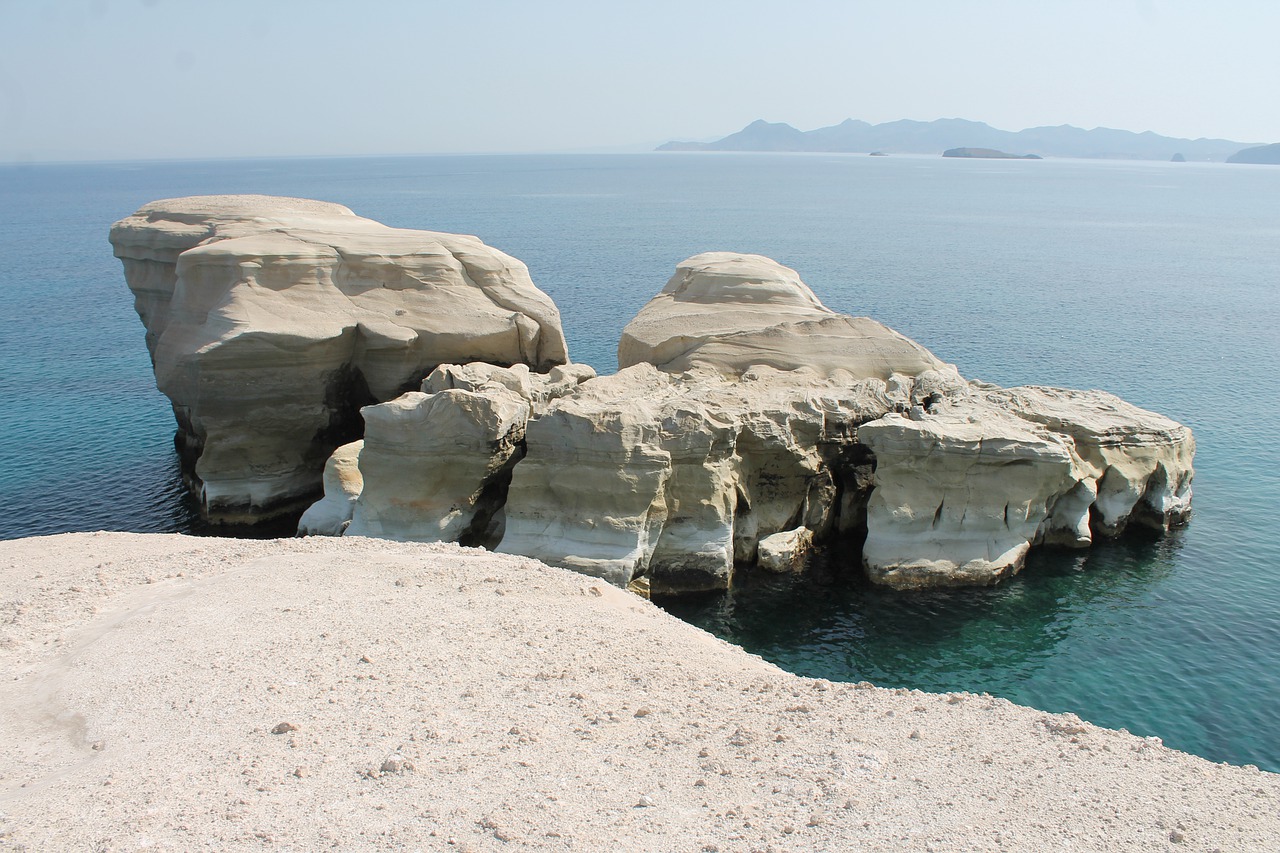
If you like off-road driving and wild beaches, you will love this beautiful island! The west side of the island is completely undeveloped, and it’s ideal if you like exploring by road.
Here’s a guide with reasons to visit Milos, and here’s how to get around Milos.
Also, our Amazon book on Milos and Kimolos, which has everything you need if you are planning to visit – including restaurant suggestions!
Tinos – A hidden gem
If you are after quaint villages and authentic, traditional areas, you should absolutely consider Tinos, one of the lesser known Cyclades islands. Tinos is quite popular among religious Greeks, as it has one of the most important Orthodox churches in the country.
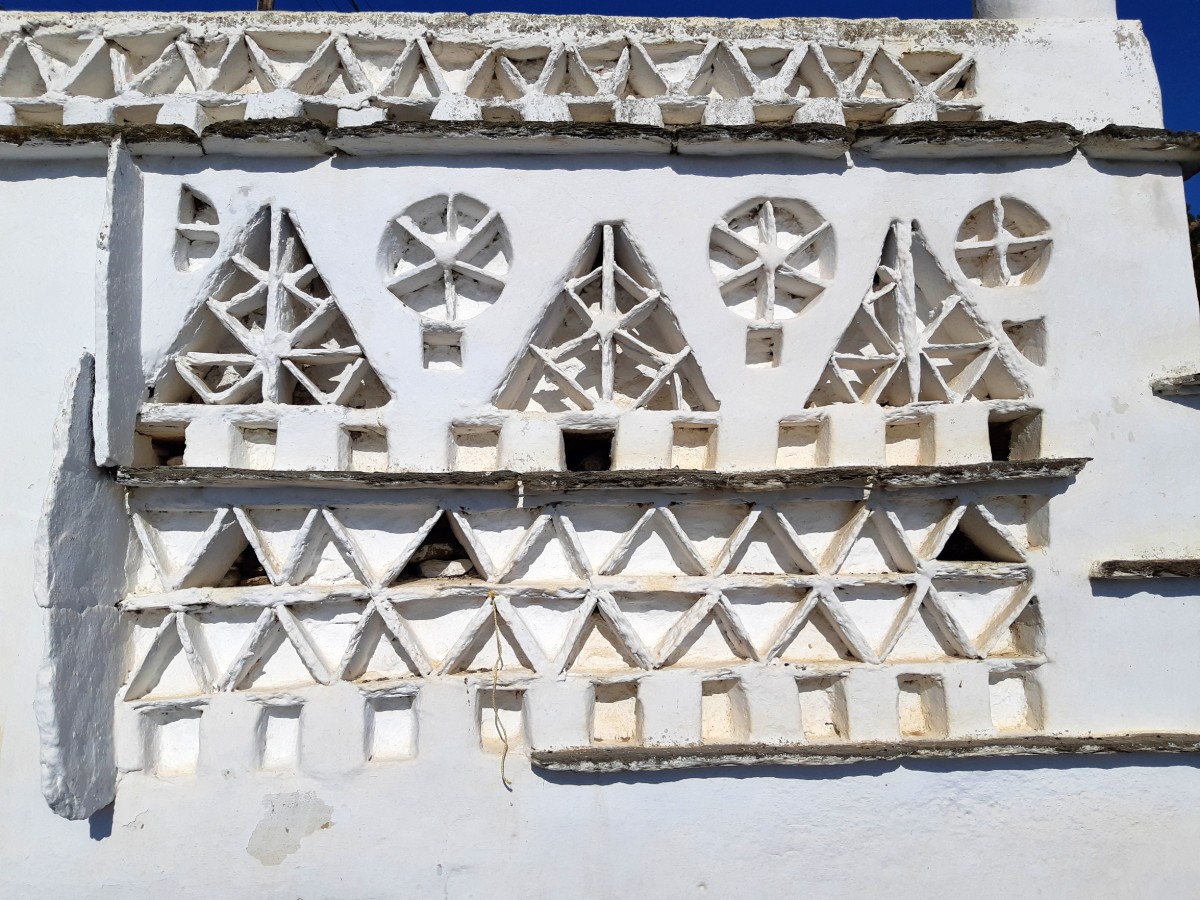
Apart from that though, it’s a beautiful island with fantastic villages, quaint architecture, stone houses, diverse landscapes and many pretty beaches.
In fact, I can definitely see Tinos becoming very popular within the next decade. I would strongly suggest you go while it retains its authenticity!
Sounds intriguing? Here’s an article with the best things to do in Tinos. Or you can check out our Amazon book on Andros and Tinos, which has everything you need!
Crete – Greece’s largest island
Crete is the perfect Greek island. It has hundreds of beautiful beaches, dozens of archaeological sites and museums, and some of the best food in Greece.
During peak season, there are several ferries from Santorini and other Cyclades islands to Heraklion, taking 2-3 hours.
You can easily spend all of your 14 days in Crete. I am a little biased though, as I have spent several weeks there in many different trips, and I love this island!
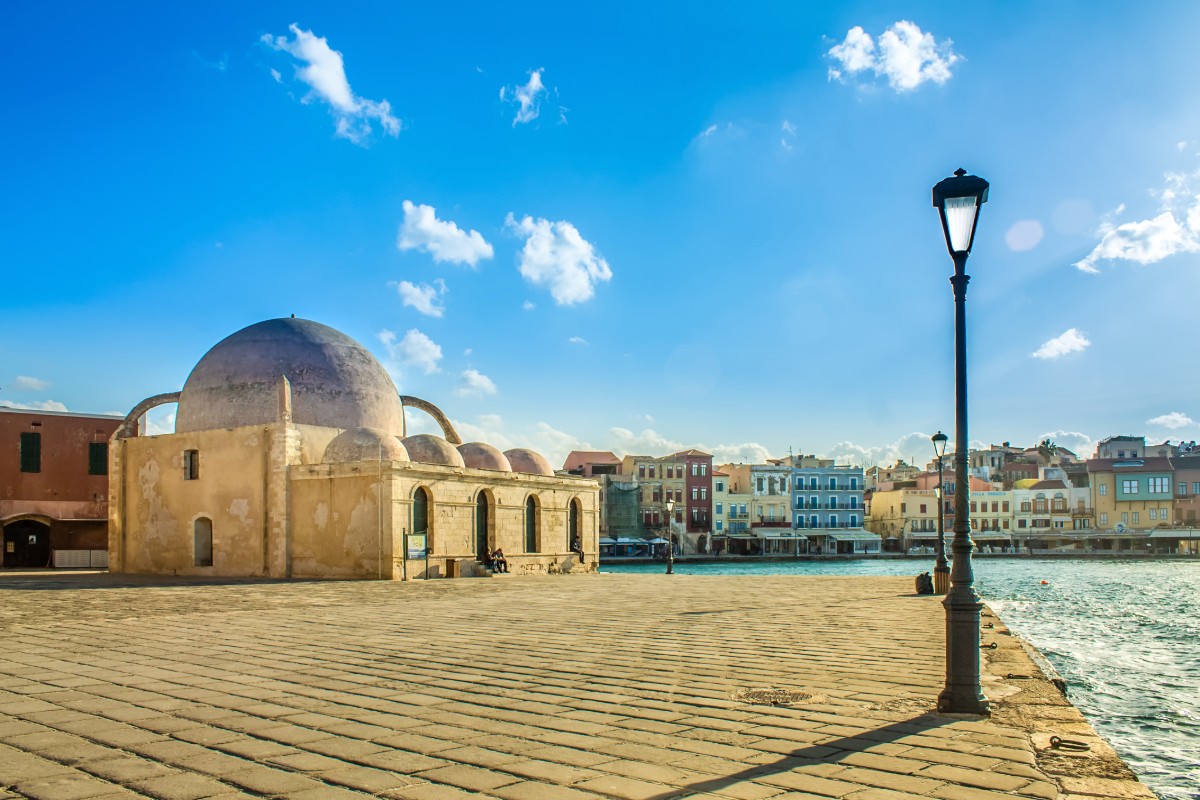
If you are going to Crete, try to allow for at least a week on this beautiful, unique island. Even then, you would only be scratching the surface.
Highlights of Crete
The best attractions in Crete are spread all around the island, which is why it’s impossible to see them all in just a few days.
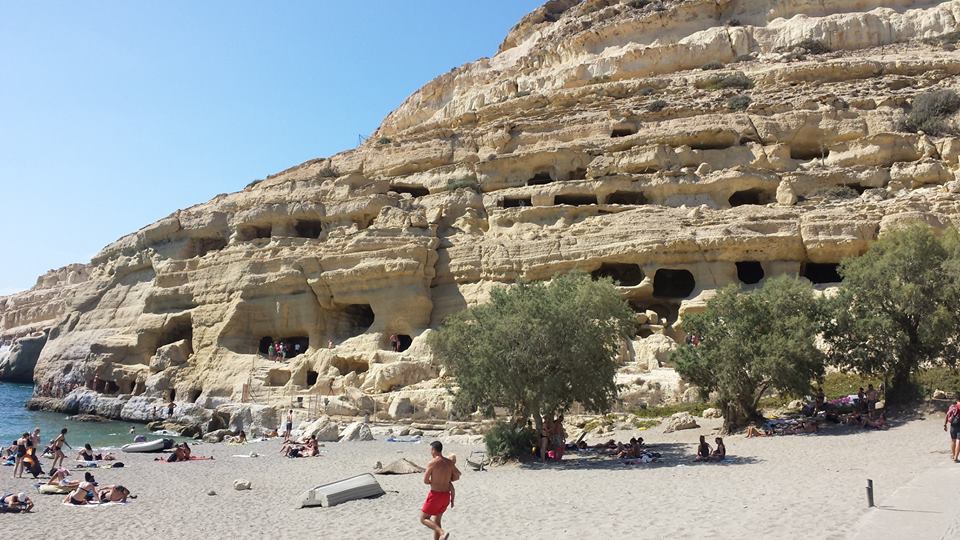
Some of the highlights include the following:
- Chania, a small, incredibly picturesque coastal town with cobbled streets and a beautiful promenade
- Rethymno, another coastal town dominated by the Fortezza castle
- Crete’s largest city, Heraklion, with a majestic castle right on the sea. It’s also home to one of the best archaeological museums in Greece.
- The archaeological sites of Knossos, Festos, Gortyna and Matala plus several minor ones
- A quaint island which used to be a leper colony, Spinalonga
- The wild Samaria gorge
- Balos and Elafonisi, two amazing, popular beaches to the west of Chania
- The dozens of stunning, remote sandy beaches on the south coast
- Lasithi Plateau and its wild landscapes
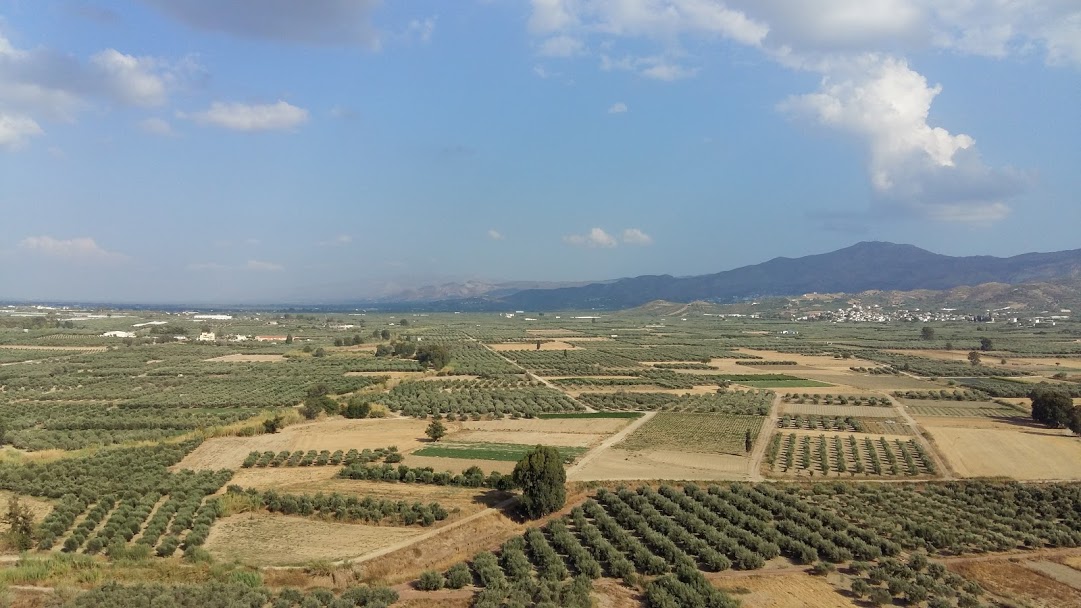
Apart from that, Crete has some of the best food and the nicest people in Greece! There is nothing not to like, apart from the fact that you can’t see it all in a few days.
Tips for Crete
If you decide to go to Crete, it’s best to concentrate on one or two regions of the island. The big question is where exactly to go to, as anywhere in Crete is just fabulous.
A popular itinerary in Crete is a combination of Chania, Elafonisi beach, Heraklion and Knossos. This is doable in four days, and would give you a flavour of the island.
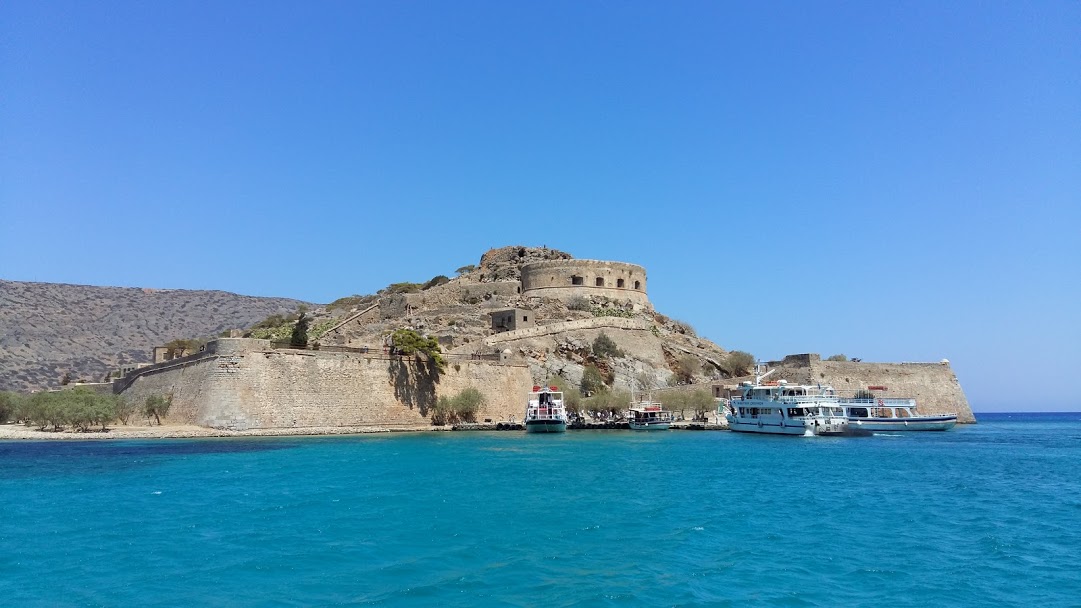
In terms of getting around Crete, it is best to rent a car. If you don’t want to drive, you can use the numerous buses that connect the main cities and villages.
There are many air carriers flying directly into Crete from several European airports. Alternatively, you can get to Crete on a short flight from Athens airport, or by ferry.
Other Greek island groups
Greece has many more famous islands which belong to different island groups. Some examples are Rhodes and Kos in the Dodecanese, Zakynthos and Corfu in the Ionian islands, and Skiathos in the Sporades.
Getting to any of these islands from Santorini will be time-consuming and costly, as you would need to take a number of domestic fights. While it’s not impossible to do, it’s best to visit those islands on your next vacation to Greece!
For more information, have a look at this introduction to the Greek island groups.
3. Athens and the Peloponnese
If you are not keen on island hopping, don’t worry – Greece has a lot more to offer. In fact, I always have the dilemma “islands vs mainland Greece” myself.
People visiting Greece primarily for the history and culture should definitely consider a road trip on the mainland. This article on driving in Greece will be helpful if you decide to rent a car.

The southernmost region in mainland Greece, called the Peloponnese, is ideal to explore by road. It’s close to Athens, and there is enough to keep you occupied for weeks.
You can see plenty of ancient sites, Byzantine churches and medieval castles, combined with beautiful landscapes and gorgeous beaches.
If you had 2 weeks in the Peloponnese alone, you could visit most of the best known destinations, and there would still be plenty left for another trip.
Attractions in the Peloponnese
The most popular attractions in the Peloponnese include the following:
- The Corinth canal, a popular photo-stop for people heading to the Peloponnese
- The castle of Acrocorinth, an impressive fortress up on a rock overlooking Corinth
- The site of Ancient Epidaurus, with its amazing ancient theatre, the temple of Asclepius and the adjacent museum
- The archaeological site and museum of Mycenae, one of the most important sites in Ancient Greece
- The castle of Monemvasia, a medieval town built on a small island, just off the coast
- The beautiful beach of Elafonissos, to the south of the Peloponnese
- The unique Diros Caves, which you will visit in a boat
- The massive byzantine site of Mystras, close to Sparta
- The impressive archaeological site of Olympia, where the first Olympic Games were organized in 776 BC
- The castles of Methoni and Koroni, dating from the Venetian era, located close to the beautiful Finikounda beach
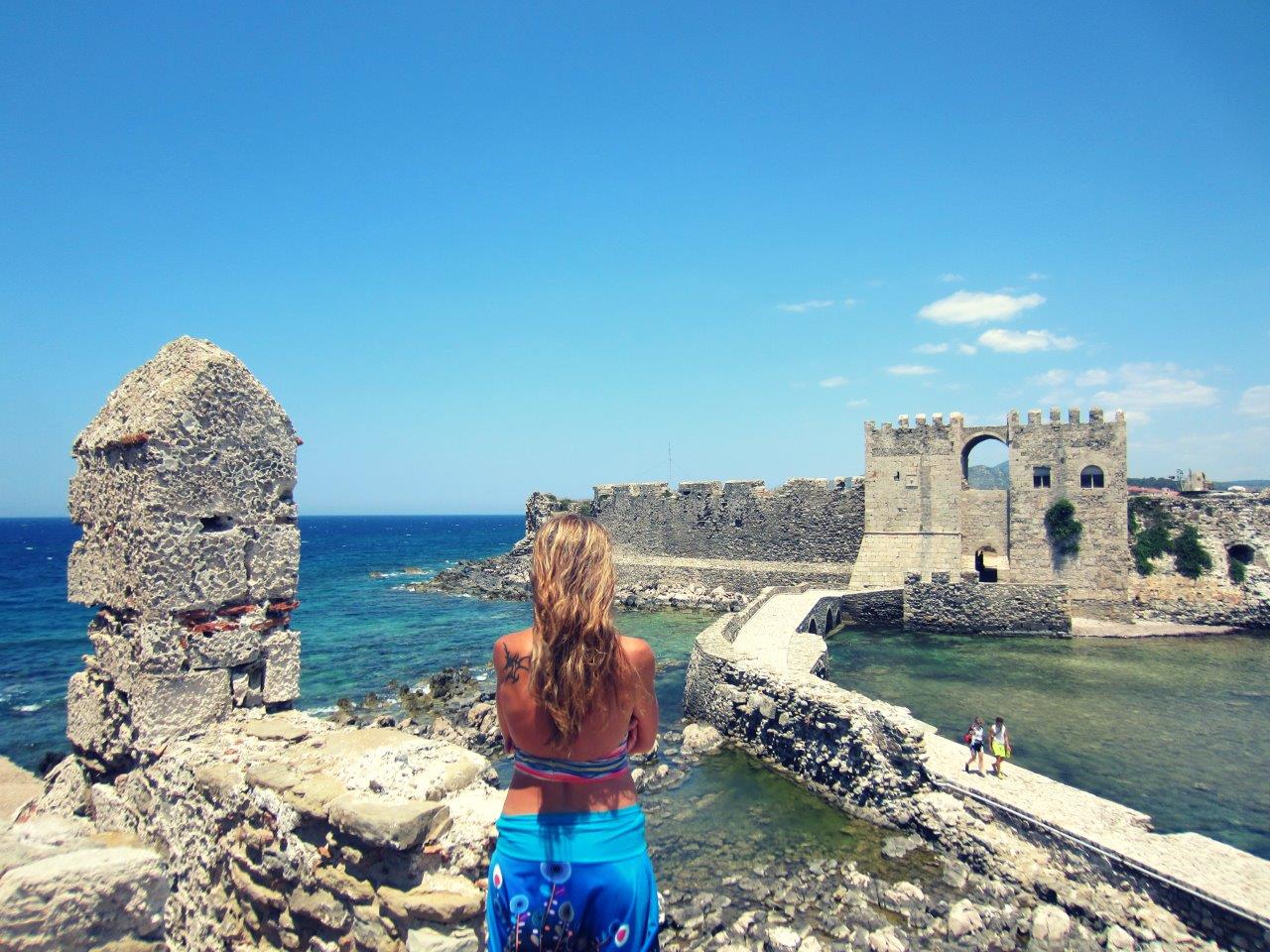
But that’s not all. The Peloponnese also offers some pretty unique landscapes, fantastic wineries and many more attractions. The Peloponnese alone could easily fill up your 2 weeks Greece itinerary!
Where to stay in the Peloponnese
The Peloponnese is full of coastal towns and resorts where you can stay. Here are a few popular choices:
The famous Nafplio. This is a picturesque coastal town, which was the first capital of modern Greece. There are many attractions here, such as the impressive castle and the beautiful neoclassical houses.
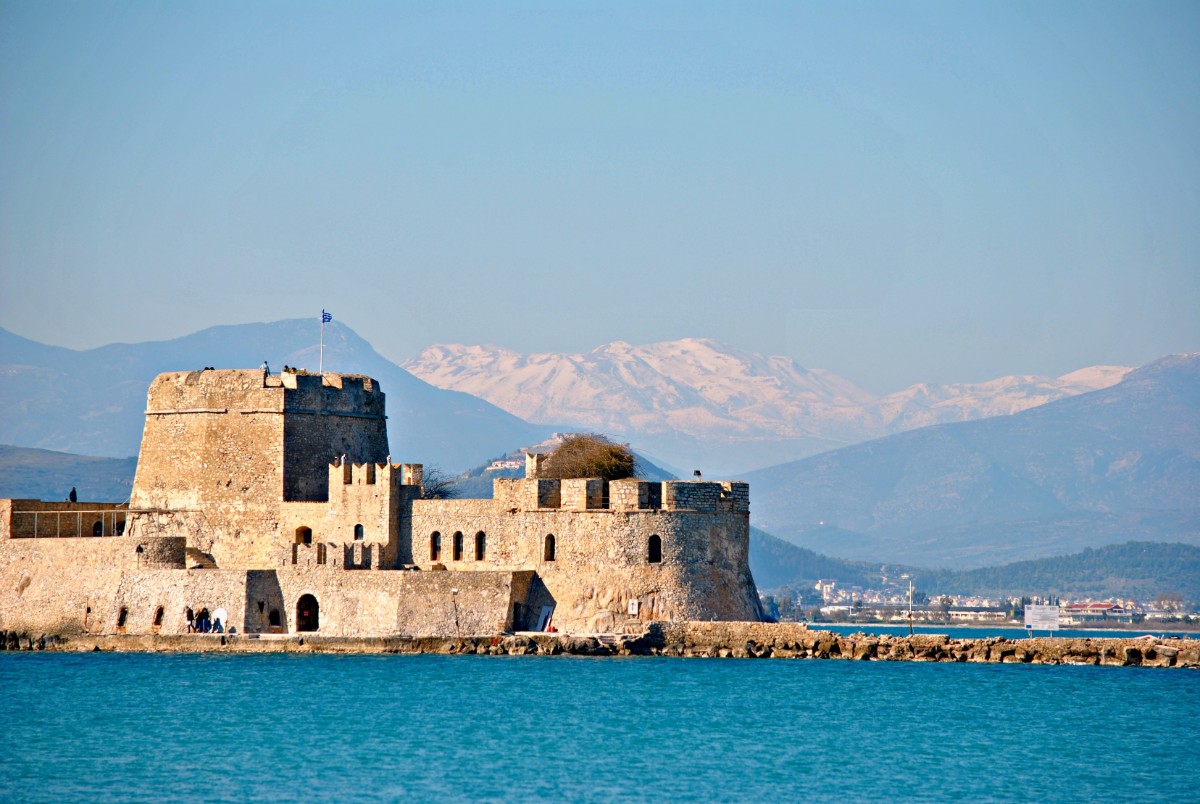
The lively Kalamata. This is a pretty coastal city built right on a long, sandy urban beach. There are plenty of things to do in the old town. The olive oil from this region is among the best in Greece. Kalamata also has an international airport. Here’s how to get from Athens airport to Kalamata.
The picturesque Gythio. This is a relaxed town on the coast. There are a few attractions, some fantastic tavernas and the lovely Mavrovounio beach nearby.
The romantic Monemvasia. This impressive medieval town deserves a stop, and an overnight stay is definitely worth it.
Day-to-day itinerary for Athens and the Peloponnese
A relaxed Peloponnese and Athens itinerary, including several day trips, could look like this:
- Day 1 – Arrive to Athens, drive to Nafplio, stay in Nafplio
- Day 2 – Day trip to Ancient Mycenae and Ancient Epidaurus
- Day 3 – Visit Palamidi castle in Nafplio, explore the town
- Day 4 – Drive to Monemvasia, stay in Monemvasia
- Day 5 – Day trip to Elafonissos beach
- Day 6 – Drive to Gythio, stay in Gythio
- Day 7 – Day trip to Diros Caves and Mavrovounio beach
- Day 8 – Visit the Byzantine site of Mystras, drive to Kalamata, stay in Kalamata
- Day 9 – Explore Kalamata
- Day 10 – Day trip to Methoni and Koroni castles and Finikounda beach
- Day 11 – Drive to Ancient Olympia, visit the site and museum, stay in Olympia
- Day 12 – Drive back to Athens
- Days 12 – 14 – Explore Athens
If you follow this itinerary, you will get to see the highlights and important archaeological sites in the Peloponnese and Athens. And there will be many other ancient sites to discover on your next visit!
Budget for a 2-week Greece itinerary
Budgeting for a Greek holiday can be a daunting task. How much you will end up spending depends on what you will do, how many different places you want to visit, what sort of accommodation you are after, how you are planning to get around and many more factors.

Based on two people sharing, your 2 weeks in Greece cost can actually average at around 60-70 euro per person per day, though most people would probably end up paying more. This does not include your flights to and from Greece.
You will find that transportation inside the country is one of the highest costs. If you want to use domestic flights, make sure you book them well in advance.

Ferry tickets don’t go up in price, but don’t leave them for the last minute, as they might be sold out. If you book your tickets a few months in advance, you can often find some non-changeable and non-refundable offers.
Accommodation and meal prices in Greece
Depending on what type of accommodation you choose to go for, hotels and rooms for rent can be fairly inexpensive.
We’ve actually had apartments for 20-40 euro a night in the past five years, even in August! Sky is the limit though, and caldera-view suites in Santorini can cost well over 1,000 euro for just one night.

As for meals, as a couple, we’ve had many taverna meals that didn’t exceed 25 or 30 euro.
Our article with tips for planning your trip to Greece will help you with budgeting your trip to Greece. I have included detailed information on costs, so that you know what to expect.
Also, here is our own budget for a month-long trip in the Cyclades – granted, this was during a Covid summer, and accommodation prices were the lowest I can remember for many years. Even though prices have gone up since, Greece remains very affordable overall.
Should I go all-inclusive?
My personal opinion would be to avoid all-inclusive. While all-inclusive holidays to Greece may offer better value, especially if booked for the off-season, you won’t see much of the real Greece.
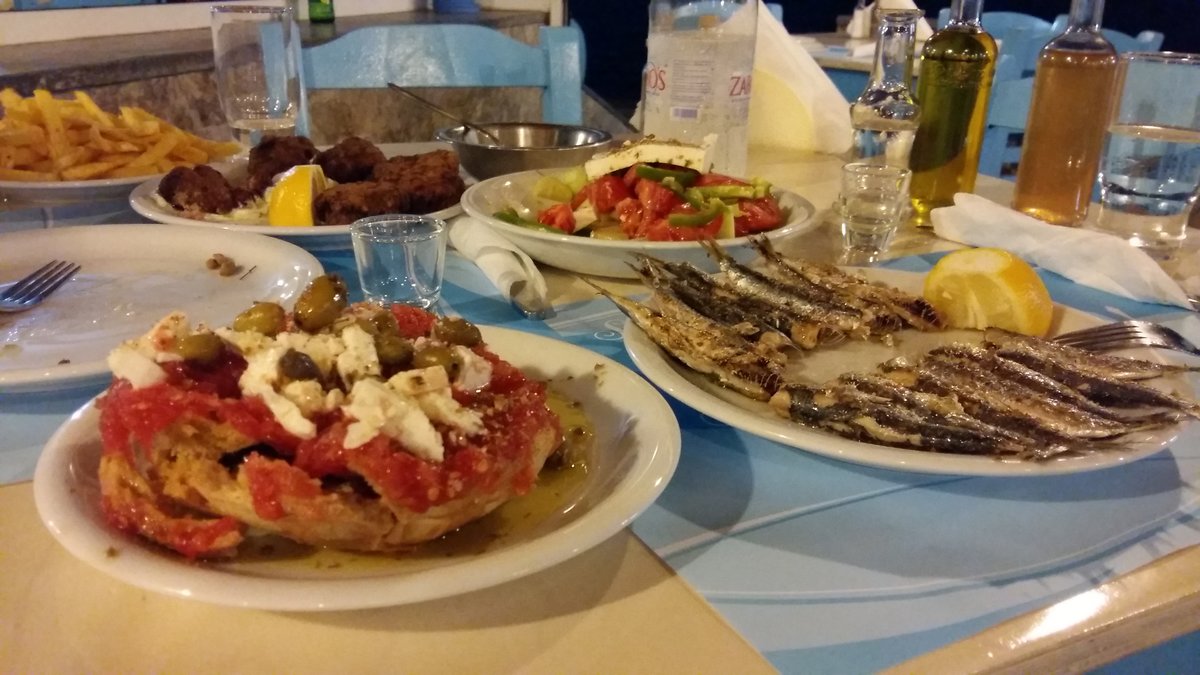
If you decide to go for an all-inclusive, please allow for plenty of time outside the resort. Don’t miss the local tavernas where you can have the famous Greek salad, local seafood and other delicious Greek dishes!
FAQ about visiting Greece
Visitors planning a trip to Greece often ask the following questions:
Is two weeks in Greece too long?
Not at all! Two weeks is a great amount of time, and you will get a good feel of some popular destinations in Greece.
How much does it cost to go to Greece for 2 weeks?
This can vary a lot, and will depend on factors like type of accommodation, transportation, any private tours etc. Budget-minded travellers could keep costs under 1,000 euro per person for 2 weeks, however most people would be looking at 1,500 or even 2,000.
How do people spend two weeks in Greece?
There are no set-in-stone itineraries. Some visitors might want to island-hop, while others will want to rent a car and explore famous sights on the mainland. Most itineraries include a few days in Athens and Santorini.
How many Greek islands can you have in two weeks?
This depends a lot on which islands you want to visit and how much time you want to spend on ferries. Allow 3-4 days on islands like Santorini, Mykonos or Milos. Larger islands, like Crete, Rhodes or Naxos will need more time. Unless you are on a cruise or sailing trip, I would suggest a maximum of 4 or 5 islands in two weeks.
How many days do I need in Greece?
If you only want to see Athens and Santorini, even a few days are enough. However, if you want to see various regions and go to many islands, you will need much longer. Two weeks is the perfect amount of time to appreciate the highlights of Greece.
More Greece travel guides
Here are a few more tips about your trip to Greece:
- What to pack for Greece for every season
- How to take the Athens airport metro
- The Greek alphabet and 20 useful Greek words
- Greek island hopping on a budget

Hi! I am Vanessa from Athens, and I love exploring my country. I hope this article has helped you plan your holiday in Greece. Please follow my FB page for news about Greece and notifications on new articles.

How smart or safe is it to rent a car while in Greece to travel from place to place? We are planning 3 weeks – first time ever. I’m excited about our itinerary, and have several of your books, however I have no clue how to get us from spot to spot.
Fly into Athens and to Santorini Island
ferry to Rhodes
ferry to Crete
ferry to Milos
Ferry to Zakynthos
Then to Peloponnese (but how do we get there from Zakynthos?)
Stay in Nafplio – day trips to Mycenae, Epidaurus, Diros Caves, Olympia
Drive to Athens
Fly out of Athens
So we know where we want to go, and what we want to explore, but no clue how to get from one point to another. Thanks!
Hi Tracey, while this is a challenging combination of destinations you could probably get a taste of each, though you’d have to swap a few islands around (e.g. there’s no ferry from Santorini to Rhodes). So a better itinerary would be ferry or flight to Milos > ferry to Santorini > ferry to Crete > fly from Heraklion in Crete to Rhodes (direct flight) – or the other way round, starting with Rhodes if you can get a direct flight there from where you live.
Now Zakynthos is out of the way so you’d have to get either a flight from Athens, or a longer trip through the Peloponnese including a ferry from the small Killini port. You can book all ferry tickets on Ferryscanner.
I wouldn’t rent a car for the duration of the stay as taking the car on ferries is expensive (and not all car rental companies would allow it), so just rent a car in each destination.
Hope this helps! Enjoy your trip!